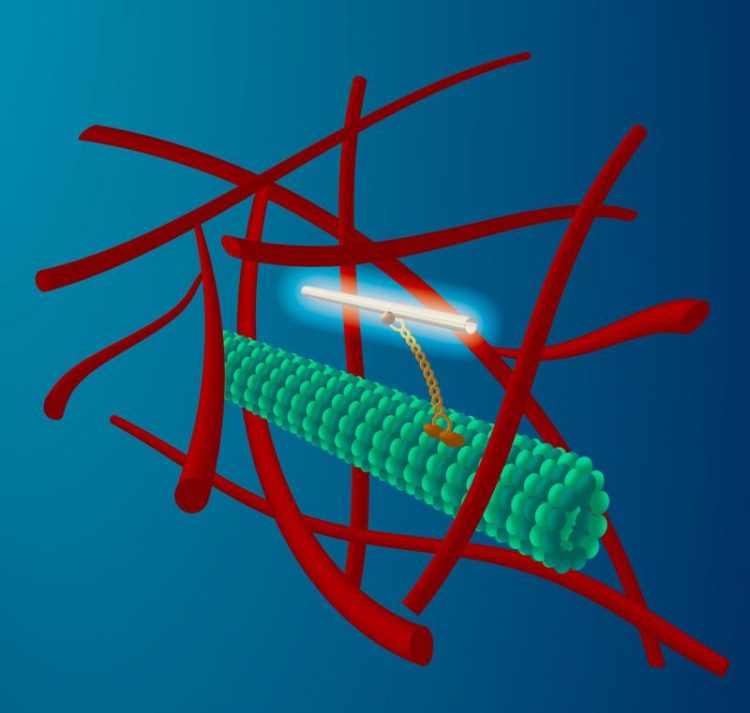Göttingen scientists discover new biological transport mechanism in cells

An international team of scientists led by the University of Göttingen has discovered a new biological transport mechanism in cells. Foto: M. Leunissen, Dutch Data Design
An international team of scientists led by the University of Göttingen has discovered a new biological transport mechanism in cells. The researchers from the Faculty of Physics, Vrije Universiteit Amsterdam and Rice University in Houston developed and applied a new method to visualize and track single molecules inside living cells and whole organisms.
They found out that cells use the same motor proteins that serve in muscle contraction to vigorously and actively stir their interior. The results were published in the journal Science.
For long-distance transport cells usually employ motor proteins that are tied to lipid vesicles, the cell’s ‘cargo containers’. An example is the transport of proteins along the long axons of nerve cells.
This process involves considerable logistics: cargo, such as proteins synthesized elsewhere in the cell, needs to packed, attached to motor proteins and sent off in the right direction. By utilizing extremely thin nanotubes serving as beacons of light, the scientists now found that cells also use a much simpler and more economical mechanism to facilitate local transport in their crowded interior.
“Much in the way a chemist would accelerate a reaction by shaking a test tube, cells stir their cytoskeleton,“ explains the leader of the study, Prof. Dr. Christoph Schmidt of Göttingen University’s Third Institute of Physics. “This activity results in a global internal stirring of the cell.“ The new discovery not only promotes the understanding of cell dynamics, but also points to interesting possibilities in designing active technical materials.
Original publication: Nikta Fakhri et al. High resolution mapping of intracellular fluctuations using carbon nanotubes. Science 2014. Doi: 10.1126/science.1250170.
Contact:
Prof. Dr. Christoph Schmidt
Georg-August University Göttingen
Faculty of Physics – Third Institute of Physics
Friedrich-Hund-Platz 1, 37077 Göttingen, Germany
Phone +49 551 39-7740
Email: christoph.schmidt@phys.uni-goettingen.de
http://www.uni-goettingen.de/en/3240.html?cid=4802 more photos
http://www.dpi.physik.uni-goettingen.de/en/science/people/211r125.html
Media Contact
All latest news from the category: Life Sciences and Chemistry
Articles and reports from the Life Sciences and chemistry area deal with applied and basic research into modern biology, chemistry and human medicine.
Valuable information can be found on a range of life sciences fields including bacteriology, biochemistry, bionics, bioinformatics, biophysics, biotechnology, genetics, geobotany, human biology, marine biology, microbiology, molecular biology, cellular biology, zoology, bioinorganic chemistry, microchemistry and environmental chemistry.
Newest articles

A universal framework for spatial biology
SpatialData is a freely accessible tool to unify and integrate data from different omics technologies accounting for spatial information, which can provide holistic insights into health and disease. Biological processes…

How complex biological processes arise
A $20 million grant from the U.S. National Science Foundation (NSF) will support the establishment and operation of the National Synthesis Center for Emergence in the Molecular and Cellular Sciences (NCEMS) at…

Airborne single-photon lidar system achieves high-resolution 3D imaging
Compact, low-power system opens doors for photon-efficient drone and satellite-based environmental monitoring and mapping. Researchers have developed a compact and lightweight single-photon airborne lidar system that can acquire high-resolution 3D…





















